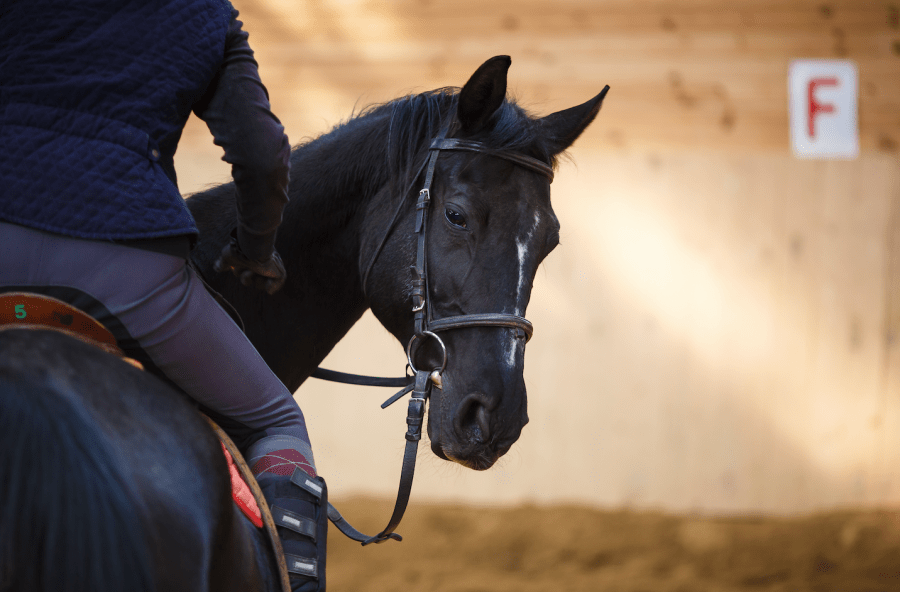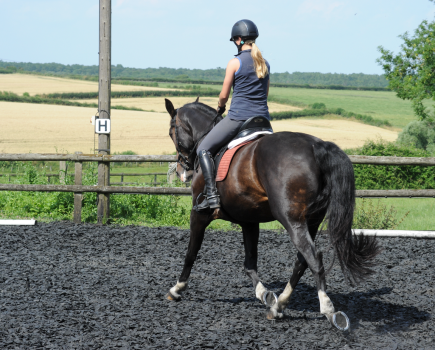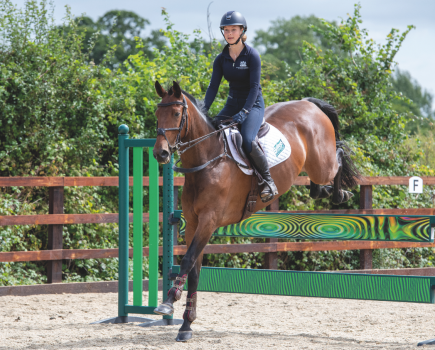Whether you refer to it as ‘breaking in’ a horse or ‘colt starting’, this initial stage of their education towards becoming a ridden horse should not be hurried.
The trainer has a responsibility to ensure the horse has the very best possible start and is a core part of your approach to their care.
The world over, it is still widely common practice for horses to be ‘broken’ to ride in a process that is both intense and quick.
These trainers are often revered for their skill and effectiveness, when often little consideration was shown for the horse during the process.
From 30-day colt starting in the USA, to cantering in six weeks, neither are practices that I feel have the horse’s best interests at heart.
To support the horse through our training of them, there are a number of ethical considerations to factor in, with a primary focus being the horse’s physical capabilities.
Are they ready?
In contrast to common thought (and regardless of breed), horses do not reach skeletal maturity until a minimum six years of age, with the final fusion of specific growth plates around eight years.
The intensity of exercise asked of horses without appropriate consideration for their physical capabilities heavily compromises their ability to perform. Too often, this results in the early onset of disease and hampers the horse’s long-term performance.
Correct physical conditioning to correctly support a rider takes years. It also takes time for a horse’s mental maturity to develop.
The latter is an often overlooked aspect that comes with age and compassionate training.
Over the years I have had the pleasure of being the first rider on a variety of breeds of all different ages, from Gypsy Vanners to Arabians.
Contrary to popular belief, I have never found the backing process of a 10-year-old to be any different than that of a five-year-old, because I ensure they all have one thing in common: readiness.
The foundation of early training
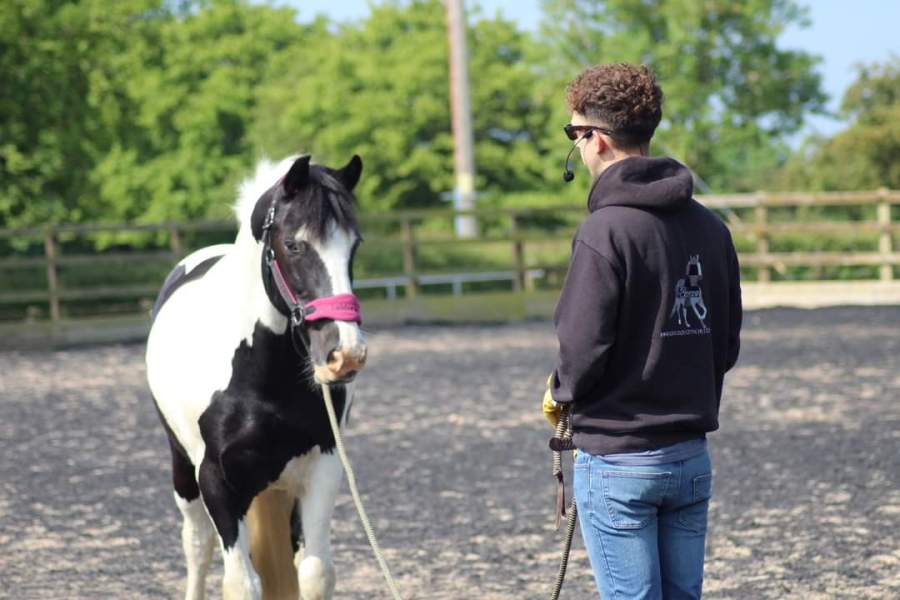
A horse’s ridden education begins on the ground. This is where we lay down the foundation, which is essentially the base behaviour and responses that all further education is built on throughout the horse’s life.
The actual ‘starting’ process begins a long time before I even think about measuring up for a saddle. It is a progressive framework of groundwork exercises that includes lunging and long-reining. The step to the saddle is then a natural continuation.
Working with the horse as an equal partner in a two-way conversation of behavioural and reciprocal feedback should be a foundational principle of any training approach. I encompass the following fundamentals that are a priority with each horse I work alongside:
- Emotional flow
- Functional movement
- Physical readiness
Together, these three key fundamentals form the basis of a foundation training plan through which a progressive framework is tailored to meet the horse’s individual needs. It follows the ABC considerations: adaptability, balance and connection.
The ABCs
There are many different methods and programmes for training horses. I personally don’t subscribe to a methodology.
Instead, I adapt a training plan to meet the needs of the individual horse and rider in front of me. It is the trainer’s job to tailor the plan to accommodate the horse when breaking in, and not the other way around.
For all progressive relationships, balance is key, both emotionally and physically. A horse that has been presented with a good foundation of education will have been worked with in a way that nurtures their ability to flow between emotional states and with their physical needs taken in to account.
None of this will come together without connection between horse and trainer, which is the result of effective communication.
Decide what kind of relationship you wish to have with your horse and how you conduct yourself in the process of achieving that.
Training ‘with’ your horse as opposed to ‘doing’ is far more productive in the long run.
Steps to starting a horse
When starting a horse, I often begin with a series of in-hand exercises. They are designed to enhance improved functional movement, mindset and muscular development.
This is essential (and yet often overlooked) to the longevity of the ridden horse. Bringing these steps towards physical conditioning in at an early age allows the equine body to prepare through the stages.
Continue to progress physical development while improving body control and manoeuvrability.
This is through a blend of tactile body communication cues that are within the horse’s level of understanding so that they are able to execute them with confidence.
It might be isolation exercises, such as a turn-on-the-hindquarters, or lateral manoeuvres like a side-pass.
Pay attention to the cues the horse has learned on the ground, and how these will be relevant when they are under saddle.
I often pair a verbal cue with the physical movement at the breaking-in stage so that it’s easier for the horse to understand when they begin ridden work.
I am a huge fan of variety in the training of all horses, including when colt starting.
That might be working with poles and cones in a controlled environment like an arena to build emotional resilience. Or it could be hand-grazing and walking out in-hand for enrichment, making the most of natural obstacles, like changes in terrain, fallen branches and puddles.
Introducing the saddle
The next stage is to introduce the saddle (no rider at this stage) to give the horse time to feel comfortable and confident with the weight and feel of it on their back.
They continue doing the groundwork exercises. It is important to watch and consider the horse’s response to the saddle.
Never let a horse ‘buck it out’ of their system. This is poor horsemanship and we know how to do things better.
A saddle and girth should be introduced gradually over time.
Use a belly wrap
A nice little exercise I like to do is a ‘belly wrap’ (pictured below). This is a long rope wrapped around the barrel of the horse.
Keep it light to begin with and gradually make the loop a little tighter.
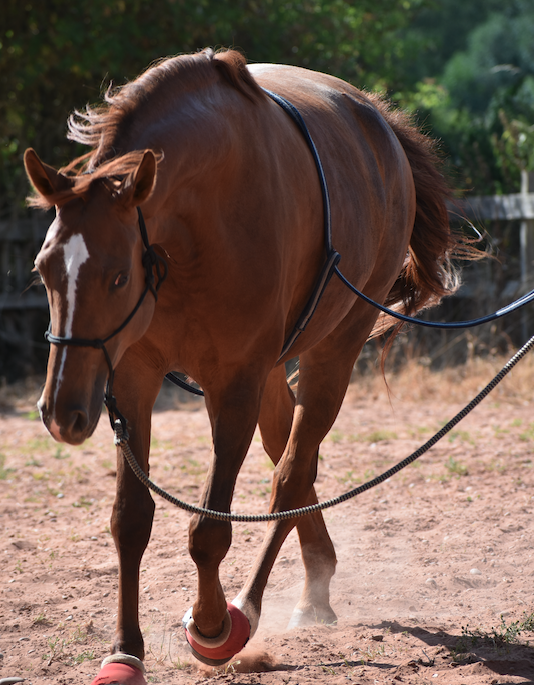
Be thorough
I am exceptionally thorough with the set-up of the horses I work with as I have a responsibility to the horse and to their owner. Remember, the process itself doesn’t have to be linear, just consistent and within your horse’s capability and capacity.
I like to ensure any horse I am starting under saddle has a good understanding of what I may need to ask of them when riding. I like to have a forwards, backwards and sideways movement at the very least.
A horse’s physical responses provide us with indicators of how they are feeling and their emotional state, which is why an adaptable approach so important, as it promotes true connection and gives an optimistic outlook.
I always say that I would rather have a horse that can feel more and do less, rather than one who can do more yet feel less.
Ultimately, my horses let me know when we are ready, only then do we move on to the first ride.
Why less is more
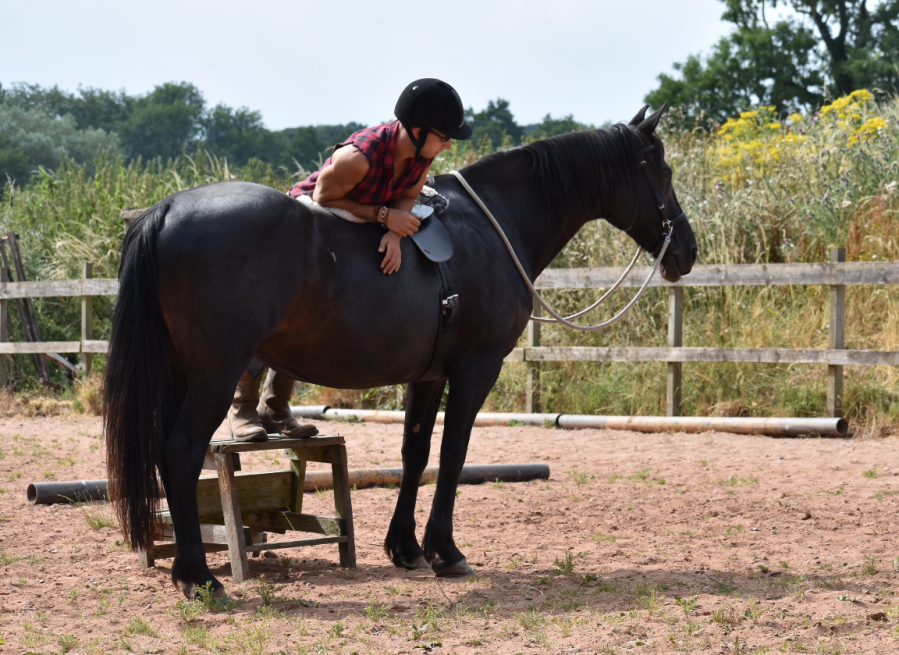
I start horses in a well-fitting rope halter with reins attached (a natural hackamore). It promotes more focus on seat cues and ensures the reins are there for communication.
A horse can establish all three paces in the halter, rather than being bridled with a mouthpiece for control.
I’m not saying all training with a bridle is inappropriate. I simply feel that a horse has a lot to think about in their early days, so a ‘less is more’ approach is beneficial. Many horses I train remain bitless. For those progressing towards having a bit in their mouth, they begin wearing it on the ground while doing in-hand bridle exercises.
Before the first ride, horses I train will have felt my weight (I lean over the saddle) and they will have seen me from above. Begin introducing and working on this for a few months prior to getting in the saddle.
Seeing a person in their ‘saddle space’ can get horses a little worried. Try things like standing at the mounting block (so you’re on the top step at the side of the saddle, but behind the horse) or sitting on top of a fence that is above their eye line.
The first ride
The first ride looks very different depending on the individual horse. Some find the starting process mentally taxing after a few steps, while others may offer a more confident walk.
Either way, it shouldn’t be overly dramatic. Yes, some horses do buck, but in my experience this is the exception and not the rule.
Thinking about it, I can’t recall a horse I have ever started that has bucked on their first ride.
I adapt the first ride and how long it is/what we do according to how the horse is feeling. It’s about knowing what is appropriate for them, and not comparing them with another horse.
At this early stage, my primary focus is to blend the work we have been doing on the ground with being ridden.
Don’t rush to introduce different paces; you don’t want to introduce speed without precision. Although if it is offered with the right energy, go with the flow!
Ensuring a good start
Listen to your horse. Be aware of how they feel, how they act and how they respond to you and act accordingly.
Integrity when starting a horse comes above all else. My biggest advice is to take your time and do it right.
If you’re sending a horse away for training, look for someone who will put their needs first.
This sets a horse up for a successful and enjoyable ridden career. If you rush you will only get to the wrong place faster.
Main image © Shutterstock; other images © Ross Cooper

